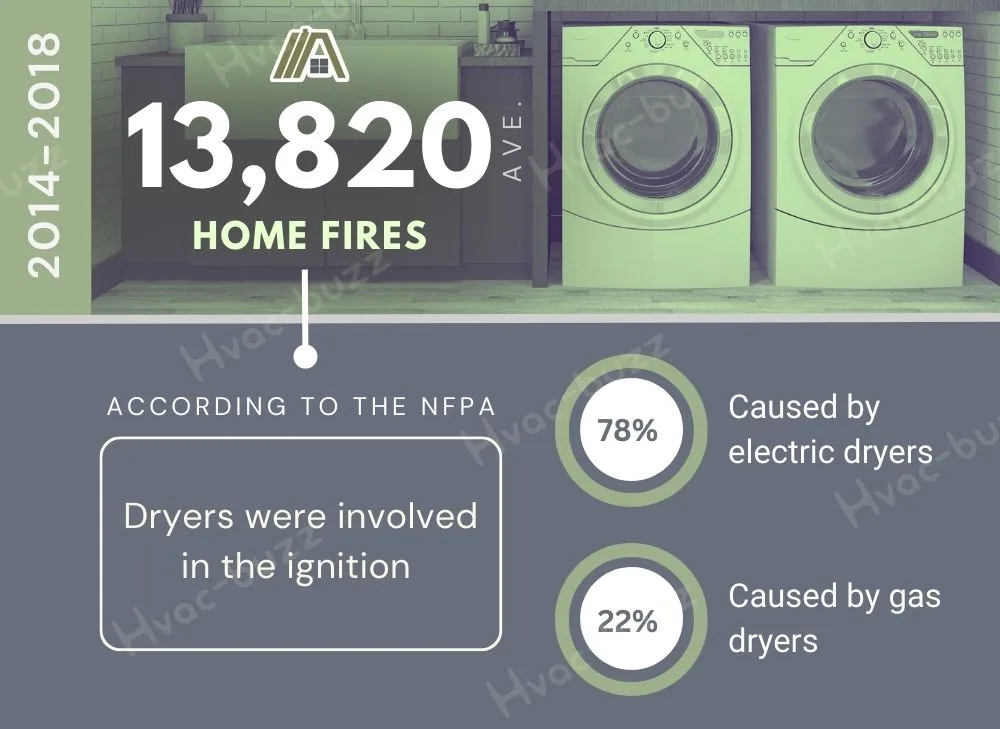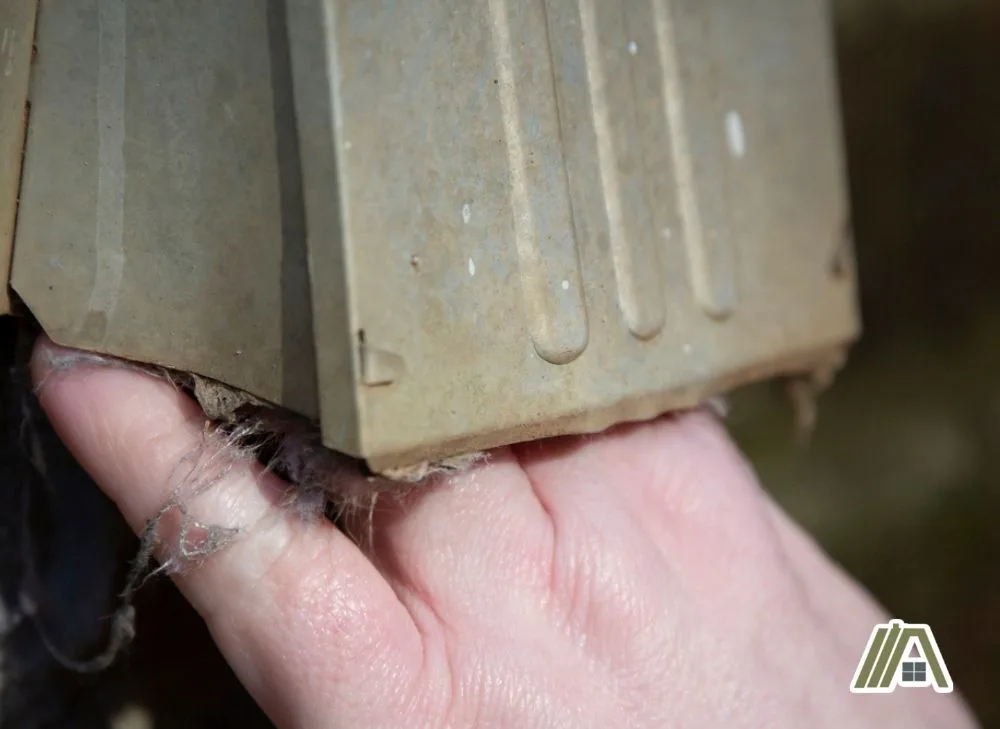House fires are scary, and with clothes dryers being a notable cause of them, it is important to make sure that yours is running as safely as possible. This brings us to the question of whether there is a safer type of dryer because, obviously, that’s the one we’d all like to get.
Many people think that gas dryers are more dangerous, considering the fire has already technically started in the machine. The statistics don’t reflect this, but not for the reasons that you are expecting.

Gas dryers seem safer based on statistics. But the reason only 22% of dryer-related home fires are started by gas dryers is that only 21% of the population have them. The stats actually show that the dryers are equally risky/safe, with the most common cause—clogged vents—being independent of heating method.
Electric Dryers Responsible for More Fires
In terms of percentages and numbers, electric dryers have been responsible for more fires than gas dryers.
According to the National Fire Protection Association, between the years 2014 and 2018, there were an average of 13,820 house fires started by dryers.
Of those, 78% were caused by electric dryers, and 22% were caused by gas dryers.
This may seem very definitive. However, there is a confounding factor and that is the prevalence of each type of dryer.

More People Have Electric Dryers
While it may be true that electric dryers start more house fires annually, this is not because they are more dangerous. Instead, it’s primarily due to the fact that more people have electric dryers than gas dryers.
In fact, the percentage of fires started by electric and gas dryers is almost identical to the percentage of people who own electric and gas dryers, which is 79% and 21%, respectively.
Therefore, neither dryer is at a higher risk of starting a fire than the other, and the difference stems from electric dryers being more popular than gas dryers.
We could even look at that 1% difference between the number of people who own a gas dryer and the number of gas dryer fires and say that gas dryers are more dangerous, but I don’t think it’s worth going into.
What it ultimately comes down to is making sure you take proper care of your dryer and minimizing the risk of it catching fire.
Most Common Cause Is Not Unique to Either Dryer
Interestingly enough, the most common cause of dryer fires is not actually exclusive to any type of dryer. Instead, fires are most often caused by failing to keep the dryer and ducts clean.
When drying, loose fibers and threads are shed from clothes, creating lint. Over time, enough lint can build up and clog vents and ducts. Being made out of fiber, lint is prone to trapping heat. This, along with its large surface area, makes it extremely flammable.

When you run your dryer, excess heat is directed out of the house through the dryer ducts and vents. If there is lint in your ducts, it will be heated by the dryer. This means that running your dryer when it has not been cleaned recently may cause any lint in the vents to ignite, starting a house fire.
Since lint comes from the clothes themselves, it is not unique to either type of dryer. Therefore, neither dryer option is going to be safer than the other when considering lint-based dryer fires.
Proper Care and Use Can Minimize Risk Significantly
Luckily, you can take action to help significantly minimize the risk of a dryer fire.
Typically, you will want to clean out the lint filter between every cycle you run. This is very important to prevent excess lint from dispersing into your dryer ducts.
However, it is also important to clean out your dryer vent at least every 12 months. This is because, while the majority of lint will get trapped in the lint filter, some will still get stuck in your ducts.
Therefore, it is important to occasionally clean out your dryer ducts to prevent any excessive build-up from occurring.
Other Safety Considerations
While lint may be the leading cause of dryer fires, a fire can start for a multitude of reasons. In addition, different dryer types have their own unique hazards that you should be wary of.
Electric Dryers Pull a Larger Current
If you are investing in an electric dryer, it is important to understand that they require more electricity than a gas dryer. Therefore, you will need an outlet that has a higher voltage to run it properly.
It is recommended to use an independent 220-volt outlet for your electric dryer to prevent overloading the circuit. If an outlet is overloaded, then it may cause an electrical fire.

There are usually a few signs that can tell you if you are overloading an outlet. One sign is if your circuit breaker keeps tripping. This is because there is too much current running through the circuit.
Another sign would be if you can smell burning or if there are scorch marks on the outlet or plug.
Gas Lines Can Leak
When it comes to gas dryers, one of the biggest safety hazards to watch out for is a leaking gas line.
A gas line can leak for a multitude of reasons. For one, it could be poorly installed or constructed from low-quality lines and fittings. In addition, the pipe can wear down over time, and old valves are also susceptible to leaking.
Not only can a leaking gas line harm your family’s health, but it also will combust if ignited, making it a very serious hazard.
If you suspect that there may be a gas line leak, then it is extremely important to reach out to a licensed professional to get it fixed as soon as possible.
Gas Dryers Produce Harmful Gases
A drawback of gas dryers is that they generate toxic gasses that need to be exhausted out of the house.
For instance, one of the gasses produced is carbon monoxide, a clear and odorless gas that can cause health problems. In addition, other volatile organic compounds need to be pumped out to prevent poisoning pets and family members.

In addition, many of these gasses can combust if ignited. Because of this, if there is an issue with your dryer’s exhaust, then it is important to get it fixed as soon as possible since it could be present in your home.
In addition, if your dryer’s exhaust terminates close enough to any windows or openings, then any gasses released can possibly reenter the home.
Because of this, the International Residential Code (IRC) highlights the following guidelines:
“If the manufacturer’s instructions do not specify a termination location, the exhaust duct shall terminate not less than 3 feet (914 mm) in any direction from openings into buildings.”
Section M1502.3
Sources
https://www.indianaec.org/2015/02/17/danger-lurking-laundry-room/
https://www.premierservicecompany.com/gas-line-leak-heres-what-you-need-to-know/
